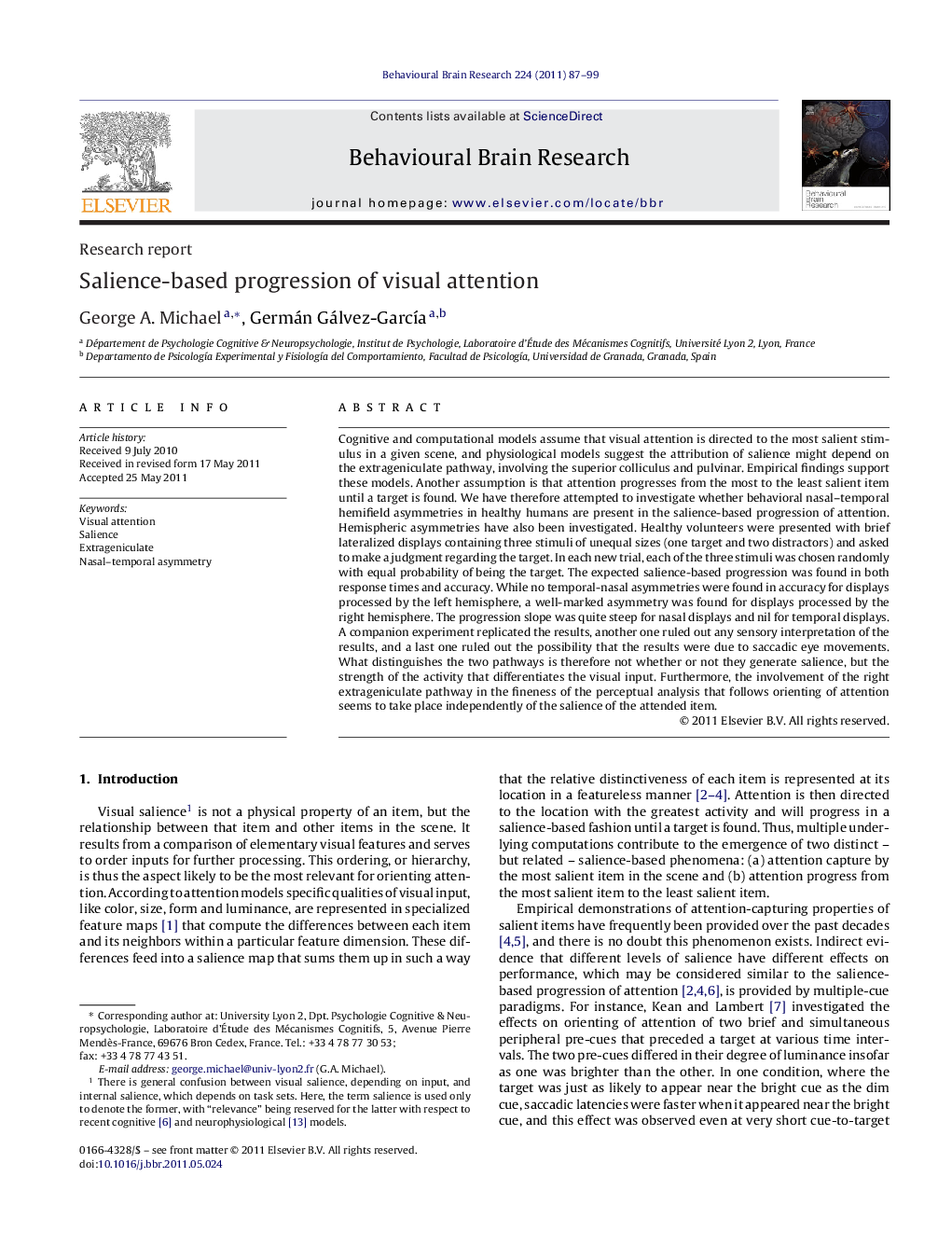| Article ID | Journal | Published Year | Pages | File Type |
|---|---|---|---|---|
| 6259779 | Behavioural Brain Research | 2011 | 13 Pages |
Cognitive and computational models assume that visual attention is directed to the most salient stimulus in a given scene, and physiological models suggest the attribution of salience might depend on the extrageniculate pathway, involving the superior colliculus and pulvinar. Empirical findings support these models. Another assumption is that attention progresses from the most to the least salient item until a target is found. We have therefore attempted to investigate whether behavioral nasal-temporal hemifield asymmetries in healthy humans are present in the salience-based progression of attention. Hemispheric asymmetries have also been investigated. Healthy volunteers were presented with brief lateralized displays containing three stimuli of unequal sizes (one target and two distractors) and asked to make a judgment regarding the target. In each new trial, each of the three stimuli was chosen randomly with equal probability of being the target. The expected salience-based progression was found in both response times and accuracy. While no temporal-nasal asymmetries were found in accuracy for displays processed by the left hemisphere, a well-marked asymmetry was found for displays processed by the right hemisphere. The progression slope was quite steep for nasal displays and nil for temporal displays. A companion experiment replicated the results, another one ruled out any sensory interpretation of the results, and a last one ruled out the possibility that the results were due to saccadic eye movements. What distinguishes the two pathways is therefore not whether or not they generate salience, but the strength of the activity that differentiates the visual input. Furthermore, the involvement of the right extrageniculate pathway in the fineness of the perceptual analysis that follows orienting of attention seems to take place independently of the salience of the attended item.
⺠Cognitive models suggest that attention is progresses through space in s salience-based fashion. ⺠Biological models do not agree on which neural pathway generates visual salience. ⺠The nasal-temporal asymmetry in salience-based progression of attention was investigated. ⺠Nasal-temporal asymmetries were found in both response times and accuracy.
